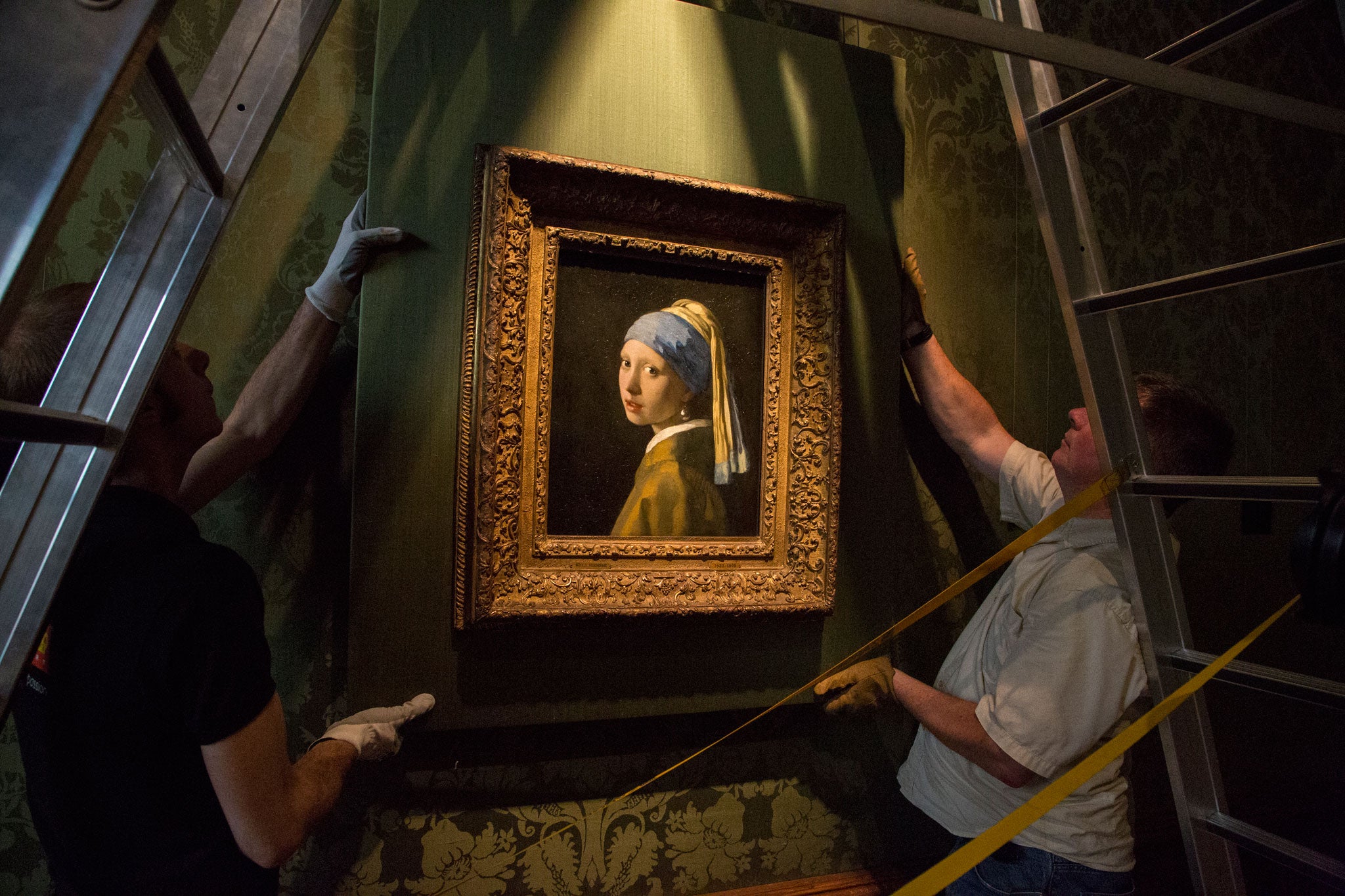
In the last five years there have been twelve books on Vermeer. My first thought on seeing Laura J. Snyder’s new book was, how many more pearl earrings do we really need? But Eye Of The Beholder isn’t all it seems. It opens with a set of shutters that allow sunlight to pour through a window in seventeenth-century Delft. Such a precise description of light entering a room can only be of a Vermeer painting, can it not? And yet it isn’t so. What is being described here is a room belonging to Antoni Leeuwenhoek, cloth merchant and self-taught lens maker, as he looks through an early microscope. At its centre is a transparent glass bead, created by Leeuwenhoek himself, and through it he observes a small pool of water containing a secret universe. Snyder has begun tracing a journey of light and shadows and the mysterious visual experience that seventeenth century Delft was only just waking up to.
The era in which Vermeer lived was saturated by light and magnified by glass. His was an age of intense discovery. Never before had instruments so extended the reach of the human senses. Telescopes and microscopes, says Snyder ‘allowed their users to see parts of the world that were previously unseen.’ And it is the little known Leeuwenhoek, with his passion for lenses, who plays such an important part in this unusual book. Life for him had begun in the cloth trade, where a magnifying glass was a crucial instrument in distinguishing the thread count. Soon he was selling ‘veils’ for artists, pieces of sheer fabric with threads running through them in a grid pattern. But his real passion was for those magnifying, or ‘flea glasses’ as they were called.
Early hand-made glass, delicately polished and tinted had a magical quality. And by the seventeenth century science was rushing full tilt towards a greater understanding of optics. With the invention of the telescope the shadows on the moon could be accounted for while microscopes revealed a ‘colour-charged, glittering world … in which new textures, hues, forms and light effects’ were seen for the first time. Surely, suggests Synder, Leeuwenhoek, ‘would have marvelled at the fact that a piece of glass could allow him to see what could not be seen with the naked eye.’
It is into this atmosphere of scientific and mathematical exploration, this ‘experimental milieu’, that Vermeer appears to begin his own exploration ‘of painting, optical instruments’ mirrors and then lenses. The camera obscura, in the early days of optical science, had illustrated only a basic principle of optics but in order for it to be useful to artists the light, instead of entering through a small aperture, needed to pass through a lens. The lens made the image infinitely clearer and while scientists were interested in what lay beyond the limits of the naked eye, artists were becoming aware of what lenses might do for the perceived world. Coincidently by concentrating the image into a narrowly restricted area, objects seemed more intensely pigmented and Vermeer’s canvases could not but become more jewel-like in tone and colour as a result.
By the 1650s Leeuwenhoek’s research became more sophisticated, revealing microscopic structures like those in the eye of a bee. In a sense he was ‘learning to see.’ Artists, too, were ‘learning to see’ and the reciprocal relationship between science and art in the seventeenth century might well be called ‘the reinvention of seeing’. It is in this absorbing way that Snyder takes us back through time, beyond the reflections and shadows, to the very heart of Vermeer’s art.
Roma Tearne’s sixth novel The Last Pier is published by Hesperus Press.
Subscribe to Independent Premium to bookmark this article
Want to bookmark your favourite articles and stories to read or reference later? Start your Independent Premium subscription today.

Join our commenting forum
Join thought-provoking conversations, follow other Independent readers and see their replies